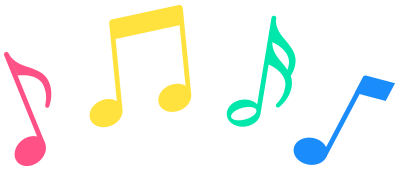Music lessons have always been an involved process of finding the time and space to practice. Once we find the time and space, we must reign in our focus, observe our mistakes and ingrain our success. It seems nearly impossible sometimes to feel like we are making any progress without sacrifices — especially when schedules start to fill up with school, homework, extracurriculars, and spending time with friends. Early in my own college career, I joined multiple music groups that required repertoire memorization. It didn’t feel like I could progress alongside my peers until I remembered a trick I picked up in my first-year psychology class. Then, all I needed was some headphones, focus, and repetition.
Music is an experience we sense through all parts of the body. In the age of COVID-19, digital communities such as My Music Bridge and other musical platforms are developing to preserve our engagement with performing & listening at a distance. Practicing to sound files, hearing musicians through our computers and phones: we can “passively” practice our ear with music when we don’t have the time or space to rehearse and still engage more of our mind than we might think possible!
What is going on in our heads when we listen to performances online? When practicing, is it always necessary to use our bodies and instruments to feel the music, or can we “feel” music we hear to embody practice on the road?
Philosophers and cognitive scientists have insisted that this bridge exists between our bodies and minds. Of course, we trust our bodies because of our experiences –– forming instinct, muscle memory, and habits. At its heart, though, we ingrain self-trust through the interplay of “presence” and “perception.” In this case of practicing music, “presence” is our interactions with our instruments and creating sound. “Perception” allows us to observe & build knowledge about practicing our music through the sounds we hear and our movements that create those sounds.
What happens, though, when we don’t have our piano or guitar accessible? What happens when we put in our earbuds and listen to the music instead of playing the notes ourselves?
There is ongoing research in the study of what psychologists refer to as “mirror neurons.” These neurons are essential for rehearsing because they trigger both when performing and observing another musician performing. Psychologists have correlated mirror neurons to our intuition, empathy, and not only in recognizing motions but also in understanding their intention. Further research indicates that the ”embodied knowledge” we use when observing motions is also apparent when we hear sounds, like when listening to music. Our minds can naturally associate changes in sound with movements & intentions even when we cannot see the musician or the instrument. As we continue to practice through listening, we can rehearse our music-making by “mirroring” the performer. Regardless of whether we are performing, observing, or listening, we have this fantastic ability to engage our entire body when we focus our attention.
References:
Merleau-Ponty, M. (1968). The Visible and The Invisible.
Iazzetta, F. (2000). “Meaning in Musical Gesture” in M.M. Wanderley and M. Battier, eds., Trends in Gestural Control of Music, pp. 259 – 268.
Gallese, V. (2005). “The Intentional Attunement Hypothesis, the Mirror Neuron System and its Role in Interpersonal Relations,” Biomimetic Neural Learning for Intelligent Robots, pp. 19 – 30.
Iacoboni, M. et al. (2005). “Grasping the Intentions of Others with One’s Own Mirror Neuron System,” PLoS Biology 3, No. 3, 529 – 535.
Corness, G. (2008). The Musical Experience through the Lens of Embodiment. Leonardo Music Journal, 18, 21–24.




